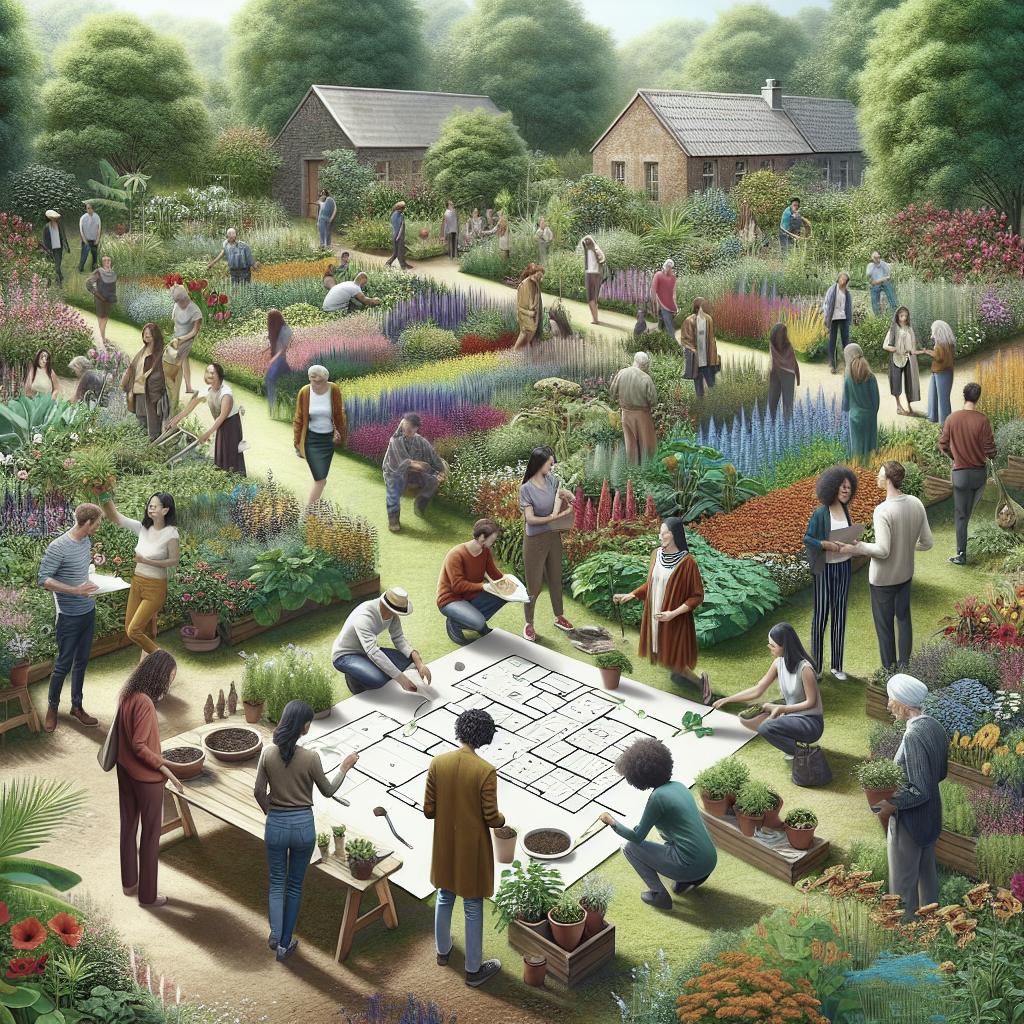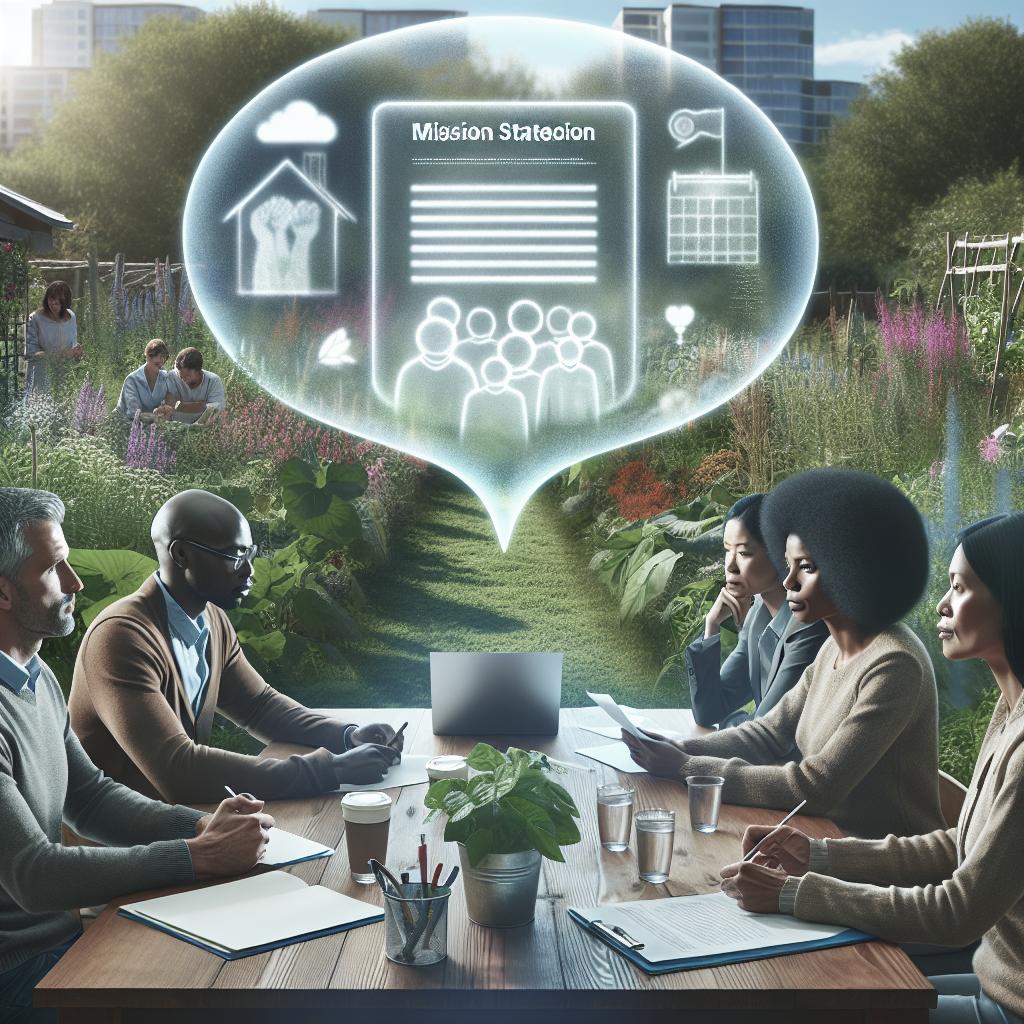Creating a thriving community garden isn’t just about planting seeds—it’s about sowing the seeds of community involvement, collaboration, and shared vision. Participatory garden design is the cornerstone of this approach, drawing on the collective knowledge, preferences, and enthusiasm of the community. In this blog post, we’ll explore methods to engage the community effectively in the design process. From gathering initial feedback and incorporating diverse perspectives to continuous collaboration and celebrating milestones, we’ll guide you through each step to ensure your garden flourishes with community spirit.
Rate this article
Ensuring that a community project responds to the needs and wants of its members starts with open communication. It’s essential to gather feedback from a broad audience to understand their vision and preferences. Surveys, community meetings, and informal focus groups are excellent initial steps. When community members feel their opinions are valued, their engagement level increases. For instance, use online and offline surveys to collect information. Questions might include their favorite plants, preferred garden styles, and any allergies or specific needs. This initial data helps to create a base design, highlighting the community’s collective desires.
Thanks for your feedback
Once feedback is collected, it’s essential to acknowledge it. Communicate back to the community how their input is shaping the project. This can be done through community newsletters, social media updates, or at community meetings. Transparency in this phase builds trust and shows respect for their contributions. You can create visual drafts or sketches incorporating the feedback. Present these drafts to the community to validate the designs and ensure no significant concerns are overlooked. This iterative process ensures everyone is on the same page and feels a part of the project.
Tell us more
After presenting initial drafts, open the floor for more detailed discussions. Community workshops can be effective for deeper dives into specific elements of the garden. Organizing these workshops by various themes, like native plants, sustainable practices, or recreational areas, allows for more focused input. During these sessions, encourage participants to bring their ideas or even sketches. Provide materials that facilitate creativity, such as maps, markers, and plant catalogs. This inclusive atmosphere fosters creativity and ensures a rich diversity of ideas makes it into the final design.
More articles on Community Outreach
For more insights and strategies on engaging your community, consider reading articles that delve into specific community outreach methods. Topics might include “Effective Communication Tools for Community Groups,” “Harnessing Local Talents for Community Projects,” or “Navigating Cultural Sensitivities in Community Initiatives.” Each of these areas provides valuable lessons that can enhance your community gardening project. Additionally, look into case studies of successful community gardens. Learning how other groups navigated challenges and maximized community engagement can provide new ideas and inspiration for your project.
Are you sure you want to delete your contribution?
In any collaborative process, conflict or opposition may arise. Address these concerns respectfully and transparently. When a community member suggests a significant change or expresses discomfort, respond thoughtfully. It shows that their voices are heard and valued. Establish clear guidelines for decision-making to ensure everyone understands how contributions will be handled. This might include voting procedures, forming a steering committee, or using collaborative platforms where everyone can see the project’s development.
Are you sure you want to delete your reply?
Similarly, moderating online discussions or community forums can ensure productive dialogues. Encouraging respectful communication and providing clear guidelines for discourse can help in managing disagreements or divergent opinions effectively. Your online presence is also an opportunity to keep community members engaged. Post regular updates, share progress pictures, and celebrate small wins. This keeps the project forefront in their minds and maintains enthusiasm over longer periods.
1
Start your community garden design process by establishing a clear vision that echoes the community’s collective desires. A unified vision not only drives the design forward but also ensures every step taken aligns with the shared goals. Having a clear vision also helps when applying for grants or seeking support from local businesses. A well-articulated mission can be persuasive and demonstrate the project’s potential for positive community impact.
2
Create engagement opportunities through varied mediums. Use physical meetings, online surveys, social media, and local events to reach diverse demographics. Each platform has its advantages, and using multiple channels ensures a broader, more inclusive reach. For example, older community members might prefer in-person meetings, while younger demographics might engage more on social media. Utilizing different methods of communication increases the chance of getting comprehensive feedback from all community segments.
3
Utilize inclusive design workshops focusing on different aspects of garden planning. These workshops can be thematic (like sustainable practices or recreational areas) or demographic-focused (families, seniors, youth). Tailored workshops allow for detailed input and foster a sense of ownership among participants. Breaking down the design process into manageable topics also helps prevent overwhelming the community with too many decisions at once, ensuring thoughtful contributions.
4
Acknowledge and celebrate community contributions. Whether through public thank-you notes, newsletters, or community events, showing appreciation keeps morale high and sustains long-term involvement. It’s important that people see the tangible impact of their contributions. Celebrating milestones, no matter how small, keeps the momentum going. Organize events like planting days or initial harvest festivals to bring people together and share in the project’s progress.
5
Implement transparent decision-making processes. Whether through democratic votes, steering committees, or consensus models, clarity in how decisions are made ensures trust and openness in the process. People are more likely to stay involved if they understand how their input is used. Using platforms like community apps can also enhance transparency. Features like real-time updates, polls, and feedback sections keep everyone informed and engaged.
6
Maintain an active online and offline presence. Regular updates, progress pictures, and small wins shared on social media or community boards keep the project alive in the community’s mind. Engaging content keeps stakeholders excited and invested in the garden’s growth. Besides, continuous engagement offers the chance to attract new members who might have missed out initially but would bring valuable input and enthusiasm to the project now.
7
Prepare for long-term engagement. A community garden is an ongoing effort, not a one-time project. Plan for continuous community involvement through periodic surveys, seasonal events, and celebratory milestones. Keeping the community engaged ensures the garden remains a vibrant, dynamic space. Consider developing educational programs or workshops on gardening best practices, sustainability, and local ecology. This not only enriches the community’s knowledge but also fosters a deeper connection to the garden and its ongoing development.
| Step | Description |
|---|---|
| Rate this article | Collect initial feedback through surveys and meetings to understand community preferences. |
| Thanks for your feedback | Acknowledge and validate community input through drafts and prototypes, ensuring transparency. |
| Tell us more | Hold detailed discussions via workshops to delve deeper into specific garden elements. |
| More articles on Community Outreach | Read up on various community outreach strategies and case studies for additional insights. |
| Are you sure you want to delete your contribution? | Address oppositions respectfully, establishing clear guidelines for decision-making. |
| Are you sure you want to delete your reply? | Moderate online discussions to foster a positive and respectful communication environment. |
| Various steps (1-7) | Steps include establishing vision, utilizing diverse engagement methods, and planning for long-term engagement. |
Participatory garden design is an ongoing, collaborative process. Sowing seeds of engagement, transparency, and respect within the community will help grow a garden that’s not only beautiful but also deeply rooted in community spirit.


